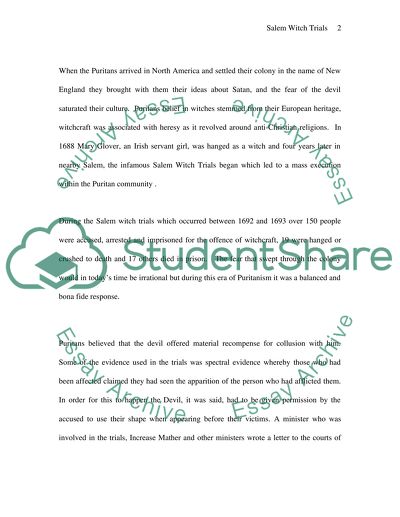Cite this document
(“Salem Witch Trials Essay Example | Topics and Well Written Essays - 1250 words”, n.d.)
Retrieved from https://studentshare.org/miscellaneous/1533955-salem-witch-trials
Retrieved from https://studentshare.org/miscellaneous/1533955-salem-witch-trials
(Salem Witch Trials Essay Example | Topics and Well Written Essays - 1250 Words)
https://studentshare.org/miscellaneous/1533955-salem-witch-trials.
https://studentshare.org/miscellaneous/1533955-salem-witch-trials.
“Salem Witch Trials Essay Example | Topics and Well Written Essays - 1250 Words”, n.d. https://studentshare.org/miscellaneous/1533955-salem-witch-trials.


